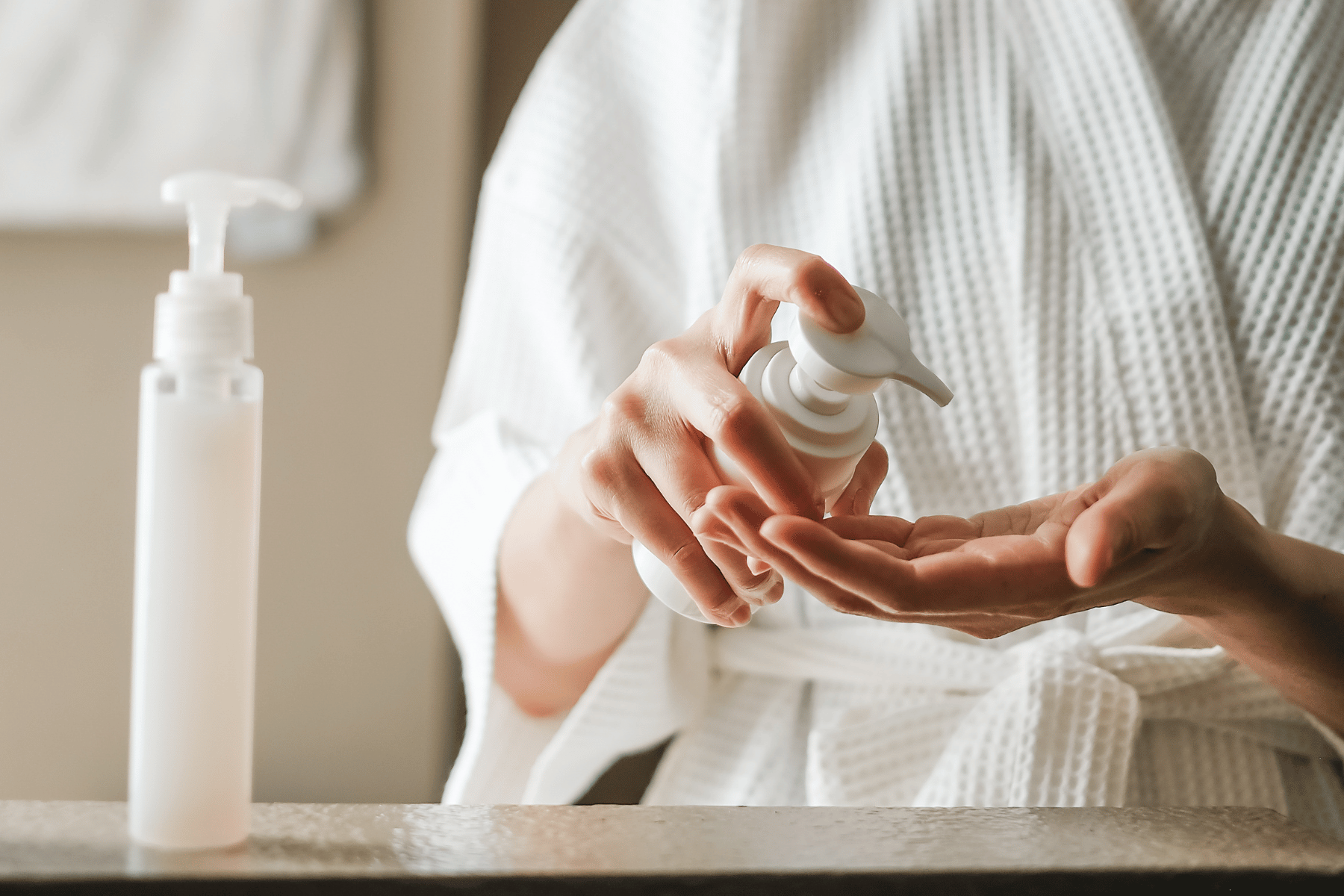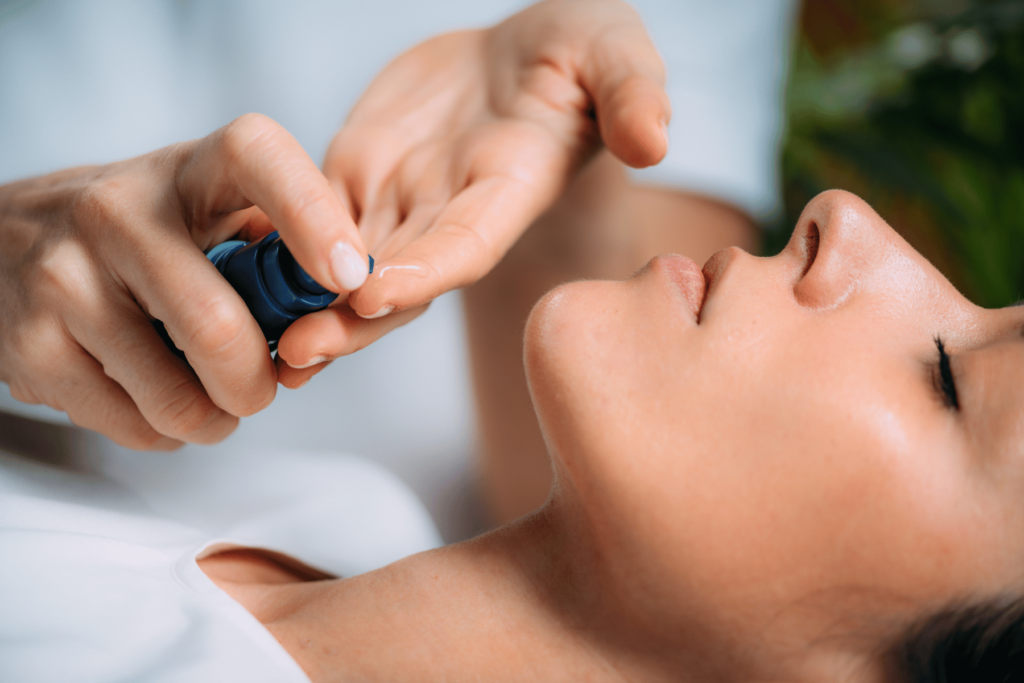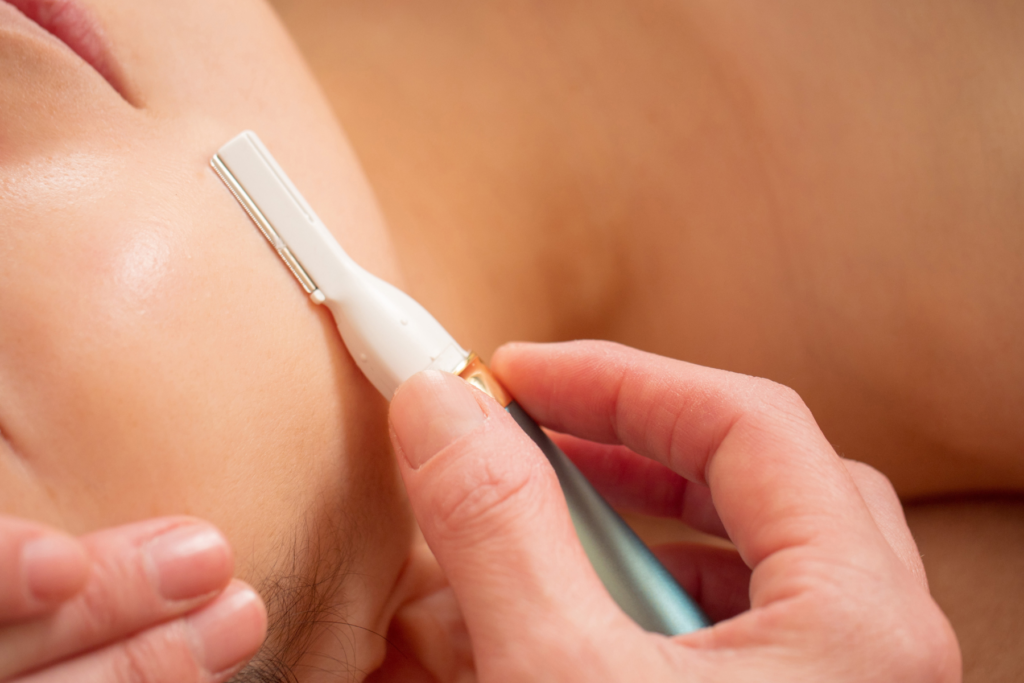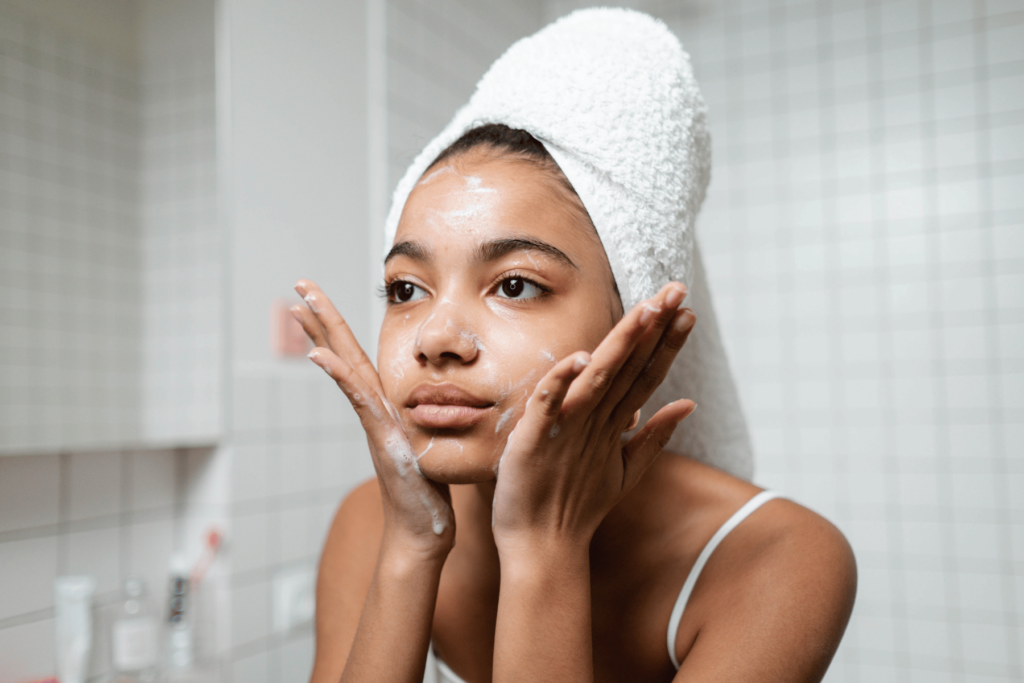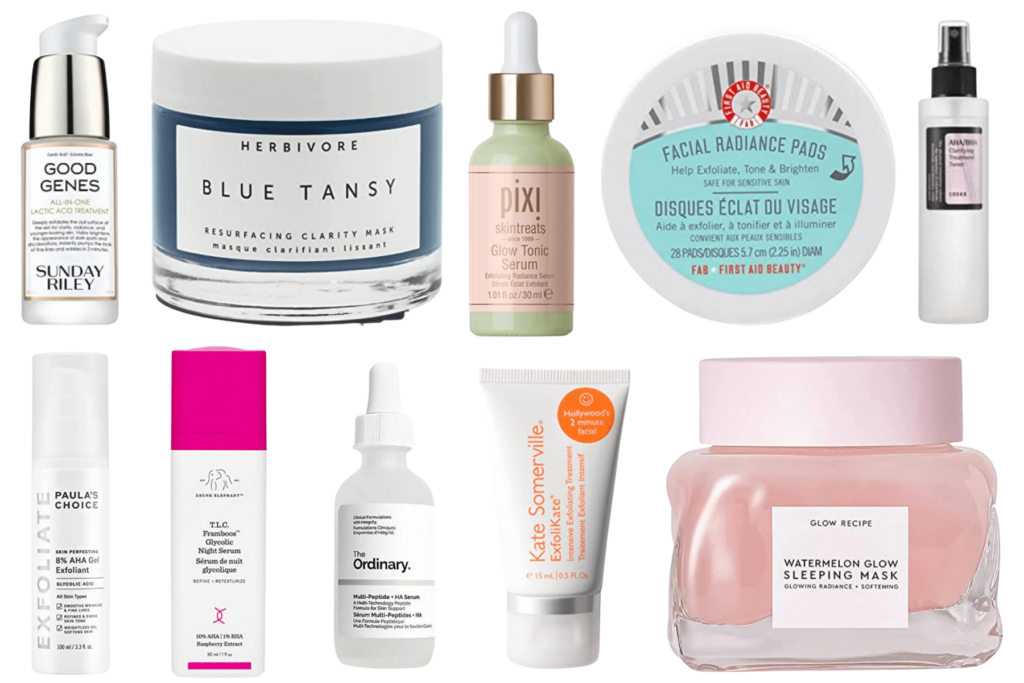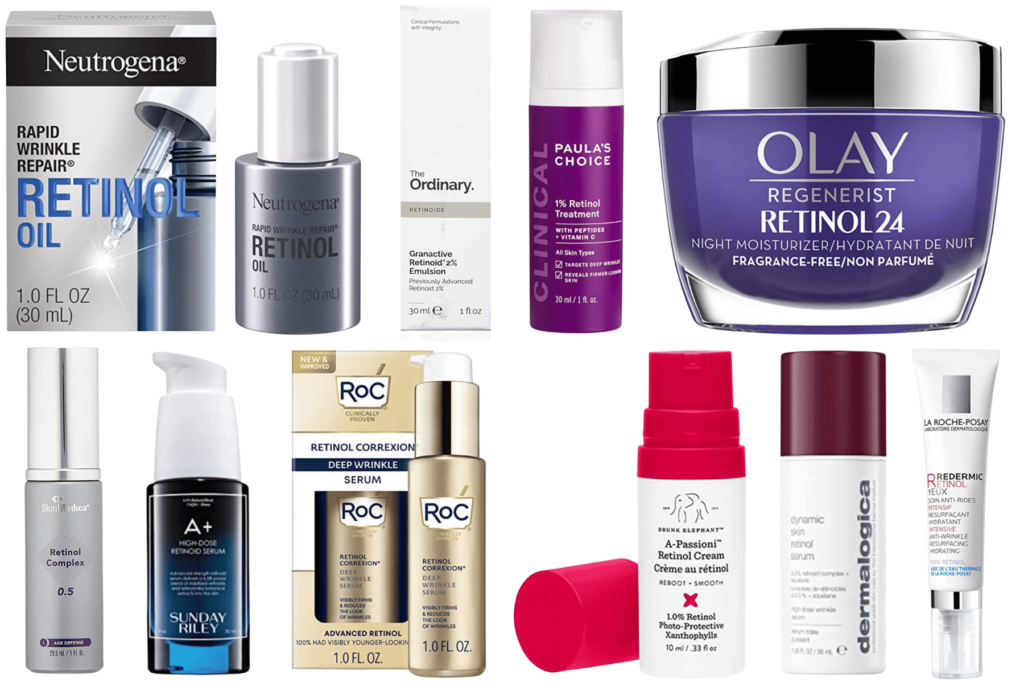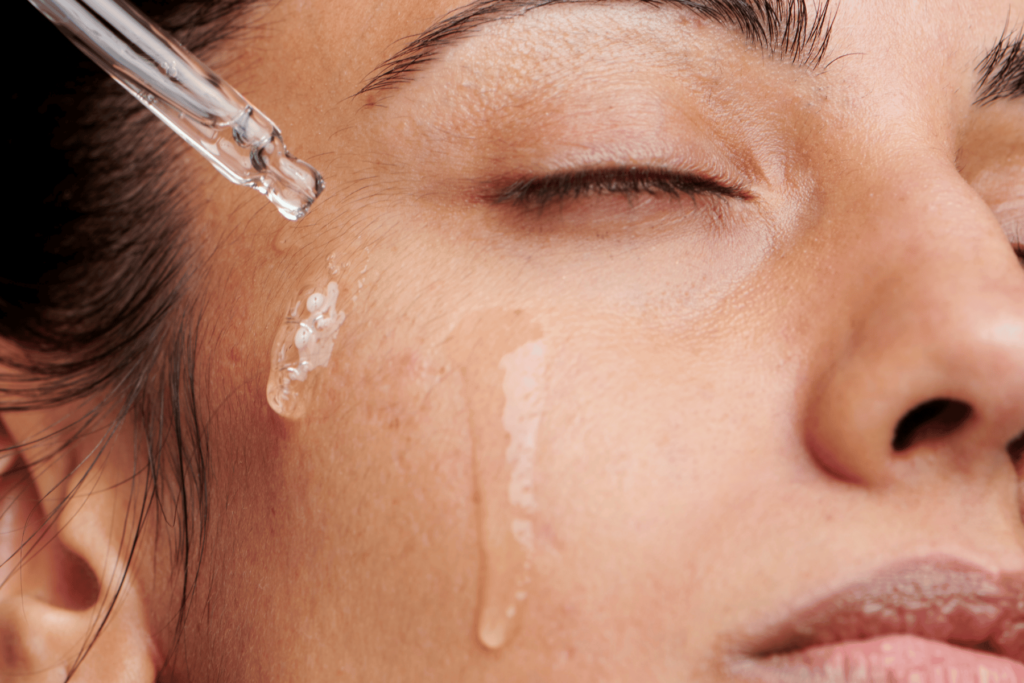Having a good skincare routine is important for women for several reasons.
First, it’s important to maintain by removing impurities, improving hydration, and supporting the skin’s natural functions.
Sun damage can cause premature aging, hyperpigmentation, and even skin cancer. A good skincare routine includes the use of broad-spectrum sunscreen to protect the skin from the sun’s harmful UV rays.
A well-designed skincare routine can help to reduce the appearance of fine lines, wrinkles, and age spots, making the skin look younger and more vibrant.
Taking care of your skin can help to boost your self-esteem and confidence.
Plus, a good skincare routine can help to prevent a range of skin problems, including acne, rosacea, and eczema, by keeping the skin clean, hydrated, and nourished.
What Makes a Good Skincare Routine
A good skincare routine should consist of a few key elements applied in the right order.
1. Cleansing
A good skincare routine should start with gentle cleansing to remove dirt, makeup, and excess oil from the skin. Look for a cleanser that is appropriate for your skin type and does not strip the skin of its natural oils.
2. Exfoliating
Exfoliating 1-2 times a week helps to remove dead skin cells and promote skin cell turnover, leaving your skin looking brighter and smoother. Use a gentle exfoliator that is appropriate for your skin type.
3. Moisturizing
Moisturizing is essential to help keep your skin hydrated and nourished. Look for a moisturizer that is appropriate for your skin type and contains ingredients that will help to keep your skin healthy.
4. Sun protection
Protecting your skin from the sun’s harmful UV rays is important for preventing skin damage and premature aging. Use a broad-spectrum sunscreen with an SPF of at least 30 and reapply every 2 hours when exposed to the sun.
Additional treatments
Depending on your skin concerns, you may also want to incorporate additional treatments such as serums, masks, or spot treatments. Choose products that are appropriate for your skin type and address your specific concerns.
(For me, it’s dark spots and my uneven skin tone. If you have the same issue, click here for my favorite foundations to cover melasma.)
The best way to make a good skincare routine great, you need to be consistent, meaning you should follow it regularly and make adjustments as needed. Give it enough time to work.
Additionally, you should be mindful of any ingredients that may irritate your skin and avoid using them.
Finally, remember that everyone’s skin is different, so what works for one person may not work for another, so it’s important to find a routine that works for you and your skin.
Can I Use Lactic Acid With Retinol?
While it is possible to use lactic acid with retinol, it is important to exercise caution as both ingredients can be quite potent and can cause skin irritation, particularly for those with sensitive skin.
Lactic acid is an alpha hydroxy acid (AHA) that is commonly used in skincare products due to its ability to exfoliate the skin, promote cell turnover, and improve the appearance of fine lines, wrinkles, and hyperpigmentation.
Retinol is a form of vitamin A that is commonly used in skincare products due to its ability to improve the appearance of fine lines, wrinkles, and hyperpigmentation. It is a potent antioxidant that works by increasing collagen production, promoting cell turnover, and improving skin texture.
If you decide to use these two ingredients together, it is best to start with a lower concentration of both products and gradually work your way up to higher concentrations as your skin’s surface becomes more accustomed to them.
It is also important to use high-quality sunscreen during the day as both ingredients can increase your skin’s sensitivity to the sun.
If you have any concerns about using lactic acid and retinol together, it is always best to consult with a dermatologist or skincare professional before beginning any new skincare regimen.
How Lactic Acid Works
Lactic acid works by breaking down the bonds between dead skin cells on the surface of the skin, allowing them to be easily removed. This process helps to unclog pores, reduce the appearance of blemishes, and create a smoother, more even skin texture.
Additionally, lactic acid can help to stimulate collagen production, which can improve the elasticity and firmness of the skin.
Lactic acid is generally considered to be a gentle AHA, making it a good choice for those with sensitive skin. However, it is still important to use it correctly and follow the instructions on the product.
When first introducing lactic acid into your skincare routine, it’s recommended to start with a low concentration and gradually work your way up to higher concentrations as your skin becomes more accustomed to it.
Additionally, it’s important to always use a broad-spectrum sunscreen during the day as lactic acid can increase skin sensitivity to the sun.
Lactic acid can be found in a variety of skincare products, including cleansers, toners, serums, and masks.
There are many skincare products that contain lactic acid, including the lactic acid products linked below.
- Sunday Riley Good Genes All-In-One Lactic Acid Treatment
- The Ordinary Lactic Acid 10% + HA 2%
- Kate Somerville ExfoliKate Intensive Exfoliating Treatment
- Drunk Elephant T.L.C. Framboos Glycolic Night Serum
- Paula’s Choice Skin Perfecting 8% AHA Gel
- First Aid Beauty Facial Radiance Pads
- COSRX AHA/BHA Clarifying Treatment Toner
- Glow Recipe Watermelon Glow Sleeping Mask
- Pixi Glow Tonic Serum
- Herbivore Botanicals Blue Tansy Resurfacing Clarity Mask
How Retinol Works
Retinol works by binding to specific receptors in the skin, which helps to increase the production of collagen and elastin, two essential proteins that help to keep the skin firm and smooth.
It also helps to regulate cell turnover, which helps to reduce the appearance of fine lines, wrinkles, and hyperpigmentation.
Retinol is available in various concentrations, ranging from 0.25% to 1%, with higher concentrations generally providing more significant results.
However, it’s important to note that retinol can be irritating to the skin, especially at higher concentrations, and can cause dry skin, flakiness, and redness, particularly when first starting to use it.
Therefore, it’s important to start with a lower concentration and gradually work your way up to higher concentrations as your skin becomes more accustomed to it.
Retinol is commonly found in skincare products such as serums, creams, and treatments, and it’s important to use it correctly to get the best results. It’s best to apply retinol at night, as it can make the skin more sensitive to the sun, and always follow the instructions on the product.
Additionally, it’s important to use a broad-spectrum sunscreen during the day to protect the skin from the sun’s harmful UV rays.
There are many skincare products that contain retinol, including the retinol products linked below.
- Neutrogena Rapid Wrinkle Repair Retinol Oil
- The Ordinary Granactive Retinoid 2% Emulsion
- Paula’s Choice Clinical 1% Retinol Treatment
- Olay Regenerist Retinol 24-Night Moisturizer
- SkinCeuticals Retinol 0.5 Refining Night Cream
- Sunday Riley A+ High-Dose Retinoid Serum
- RoC Retinol Correxion Deep Wrinkle Night Cream
- Drunk Elephant A-Passioni Retinol Cream
- Dermalogica Dynamic Skin Retinol Serum
- La Roche-Posay Redermic R Retinol Cream
Can I Use Lactic Acid With Vitamin C?
Lactic acid and vitamin C are two powerhouse components that have gained significant popularity in recent years. Before diving into the combination of lactic acid and vitamin C, let’s briefly understand the individual properties and benefits of Vitamin C.
Vitamin C, also known as ascorbic acid, is a potent antioxidant that offers numerous benefits for the skin. It helps brighten the complexion, fade hyperpigmentation, and protect against environmental damage.
Vitamin C is also known for its collagen-boosting properties, aiding in the reduction of fine lines and wrinkles. It can provide a youthful and vibrant appearance to the skin.
The good news is that lactic acid and vitamin C can be used together in your skincare routine, as they complement each other quite well. However, there are a few important factors to consider to ensure optimal results and minimize the risk of irritation:
pH Levels
Lactic acid functions best in a slightly acidic environment, typically within the pH range of 3-4. On the other hand, vitamin C requires a lower pH for optimal efficacy. Therefore, it is recommended to use vitamin C products with a lower pH before applying lactic acid-based products.
This sequence ensures that both ingredients can work effectively without compromising each other’s potency.
Patch Testing
Before incorporating any new products into your skincare routine, it is always advisable to perform a patch test. Apply a small amount of each product on a discreet area of your skin and observe for any signs of irritation or adverse reactions.
If your skin tolerates both products well individually, you can proceed with using them together.
Gradual Introduction
If you are new to using lactic acid or vitamin C, it’s best to introduce them gradually into your skincare routine. Start by using each ingredient on alternate days to allow your skin to acclimate and gauge its response.
Once your skin has adjusted, you can consider using them together, but not necessarily in the same formulation.
Separation
To avoid any potential interactions, it is advisable to apply lactic acid and vitamin C products separately.
Use lactic acid-based products during your evening skincare routine, as AHAs can increase skin sensitivity to sunlight. Apply your vitamin C product in the morning to help protect your skin from environmental damage throughout the day.
Remember, everyone’s skin is unique, and it’s essential to listen to your skin’s needs. With proper usage, lactic acid and vitamin C can become your dynamic duo for achieving a radiant and youthful-looking complexion.

Other Skincare Ingredients
There are many beneficial and active ingredients that can be included in a skincare routine, depending on your specific skin concerns and needs. Here are some examples.
- Hyaluronic acid
This hydrating ingredient helps to plump and firm the skin, reducing the appearance of fine lines and wrinkles.
- Vitamin C serum
An antioxidant that helps to brighten and even out skin tone, while also protecting against environmental damage.
- Niacinamide
A form of vitamin B3 that helps to improve the skin’s texture, reduce inflammation, and regulate oil production.
- Salicylic acid
A beta-hydroxy acid that exfoliates the skin and unclogs pores, making it an effective ingredient for oily skin and acne-prone skin.
- Glycolic acid
An alpha-hydroxy acid that exfoliates the skin, improves texture, and promotes cell turnover, making it an effective ingredient for aging or sun-damaged skin.
- Ceramides
These help to strengthen the skin barrier, improving hydration and reducing the appearance of fine lines and wrinkles.
- Peptides
These can help to stimulate collagen production, improving the skin’s elasticity and reducing the appearance of fine lines and wrinkles.
- Retinoids
A derivative of vitamin A that helps to reduce the appearance of fine lines and wrinkles, while also improving skin texture and tone.
It’s important to remember that everyone’s skin is unique, and what works for one person may not work for another.
I have to emphasize again, it’s always a good idea to consult with a board-certified dermatologist or skincare professional to determine the best ingredients and products for your individual needs.
